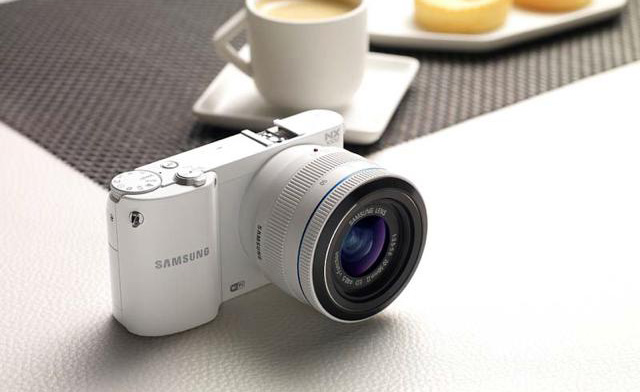In the riveting story of consumer electronics, the lowly point-and-shoot camera is about to be cut. Its days are numbered and cheap cameras are becoming increasingly less relevant as smartphones steal the limelight. The point-and-shoot camera will soon be just a supporting character.
Samsung sees the writing on the wall, too. Speaking with the Wall Street Journal, Han Myoung-sup, head of the company’s digital imaging division, indicated that the massive Korean empire will shift away from “low-end compact cameras” in an effort to concentrate on mirrorless cameras. This bet, which is the correct move by the way, shows the company’s foresight as it’s very similar to the one Samsung made several years ago when it decided to shift away from its own smartphone platforms and instead concentrate on Android. This will pay off big for Sammy.
Mirrorless cameras have so far seen a slow start. The technology forgoes the traditional bulky and complex mirror system found in digital SLR cameras. A properly named mirrorless system sits in its place, allowing the camera body to be significantly smaller than a DSLR. In most cases, mirrorless camera bodies are as thin as the compact cameras they’re attempting to replace. The redesigned camera sensor is then paired with an interchangeable lens system, which allows camera makers to deploy higher quality (high margin) glass lenses.
As the WSJ points out, Samsung currently holds just 5% of this growing market, which is projected to rise 60% this year while point-and-shoot sales are decreasing. This focus shift should allow the company the freedom to further explore the market and position their mirrorless cameras as lovely companions for their widely popular Android smartphones.
Samsung’s current mirrorless camera lineup employs several smart features that make the models a compelling companion for current Samsung customers. Samsung is building around a single platform that leverages proprietary sharing functions. A Samsung smartphone can easily share pics to a Samsung TV while a Samsung mirrorless camera is using the smartphone’s wireless connectivity. It’s a family built on sharing and Samsung is the only company with the customer and product base large enough to pull off such a hat trick.
Samsung moved 20 million Galaxy S II smartphones in 2011. Samsung is the leader in TVs for six years running and sold two HDTVs every second last November. Much to Sony’s chagrin, consumers have been latching onto Samsung for the last several years and then just a few months back at CES 2012, the company unveiled its latest innovation that essentially connects all its products. Mirrorless cameras are a big part of that push.
For the most part mirrorless cameras can command a higher margin than point-and-shoots. They’re positioned as a premium product even if the manufacturing cost is similar to cheap p&s models. But right now, the models are still somewhat rare and stuck in a niche spot between the low-end budget cameras and pricy DSLR. Samsung is attempting to break it out and own the market.
This is the right move for Samsung. Moving away from budget cell phones paid off big time. Samsung is in a dominant position in smartphones. Doing the same with digital cameras will likely yield the same result. Look for Samsung to use similar tactics and flood the market with mirrorless cameras targeting different price points. But this is just part of a larger quest for Samsung. The company is attempting (and arguably succeeding) at becoming the global leader in consumer electronics. John put it correctly at CES: Samsung is the next Apple.
